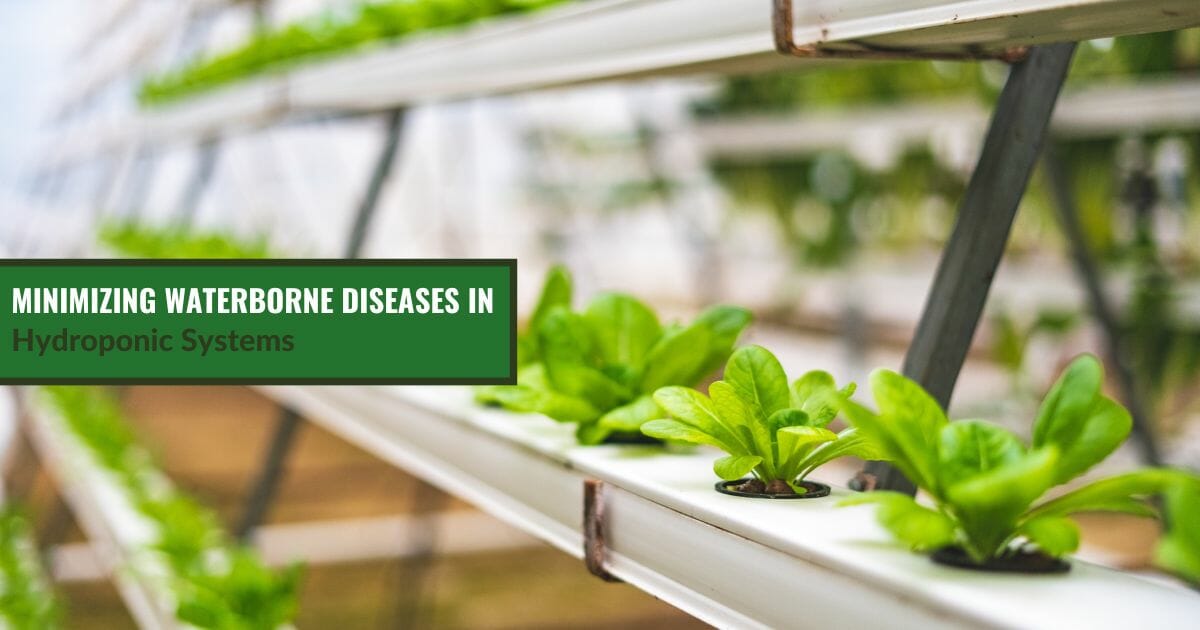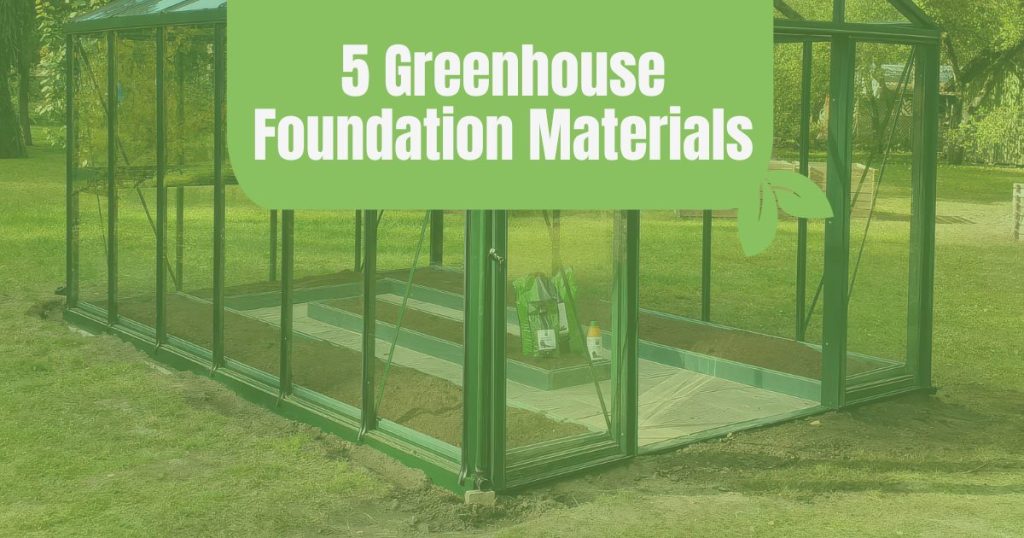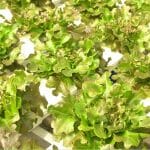

When weighing out the pros and cons of growing vegetables in a hydroponic system, you may be concerned about waterborne diseases. Admittedly, growing plants in water reduces the risk of many weeds and soil-borne pests and diseases. But hydroponics aren’t foolproof, and, if you’re not careful, you may find yourself dealing with similar or worse problems than you would in a traditional garden.
Knowing which diseases to keep an eye out for and how to identify the symptoms will allow you to take early action, before your entire system is compromised. Also, prevention goes a long way, and is the first step in minimizing and even eliminating risks of waterborne diseases in hydroponic systems altogether.
Most hydroponic issues are easy to address with a bit of due diligence. Let’s start by taking a look at the most common waterborne diseases you’ll come across. Then we’ll walk you through how to prevent & control waterborne diseases in hydroponic systems when they do occur. You may be surprised at the simple steps you can take to treat and prevent these diseases so you can keep your greenhouse plants healthy.
4 hydroponic waterborne diseases you should be aware of
One of the most important elements of proper greenhouse management is knowing how to identify potential issues. In order to successfully protect your plants in a hydroponic system, you have to be able to watch out for symptoms that point to a waterborne disease.
If allowed to spread, waterborne diseases can wreak havoc on your plants. Although there are many potential diseases, we’ve included the four most common waterborne diseases that you should keep an eye out for.
1. Pythium
Pythium is the most severe waterborne disease in hydroponic systems. It’s caused by several species of microscopic fungus-like organisms, also known as oomycetes or water molds. These organisms thrive in wet environments and they’re often found in the water supply, especially surface water. The disease caused by this pathogen is called Pythium root rot.
Pythium is a cause for concern because it’s a fast-spreading disease that’s difficult to control. It produces zoospores (microscopic spores that use hair-like appendages to move), which means that it spreads rapidly even in stagnant water.
And unlike other fungal diseases, such as Phytophthora, it’s not species-specific. This means that it can affect all your hydroponic plants indiscriminately!
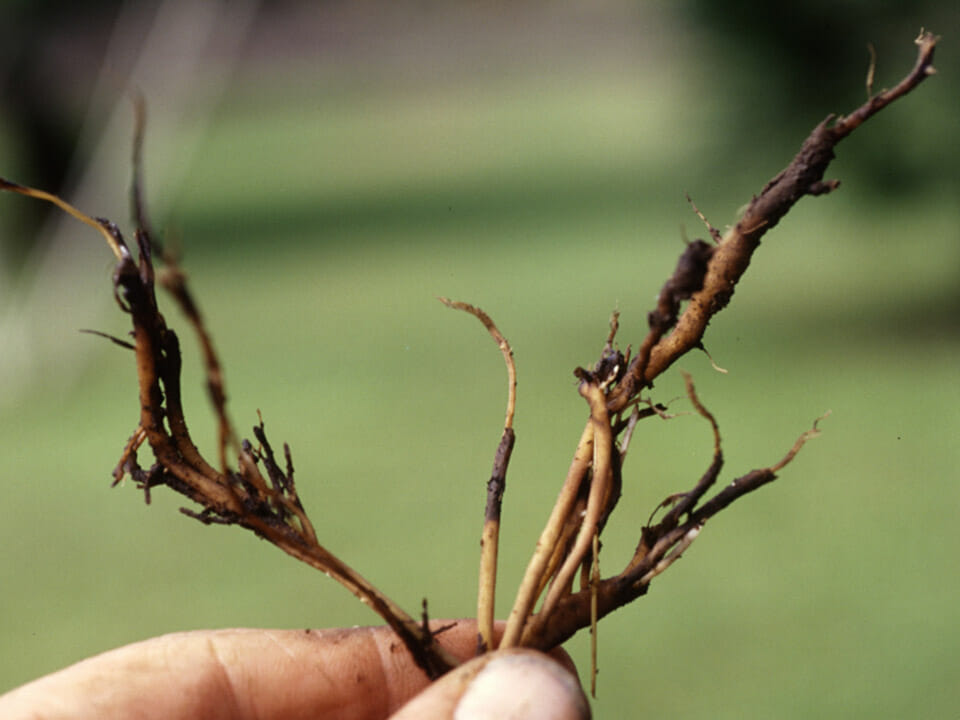
Symptoms
Identifying Pythium root rot can be tricky if you’re new to hydroponics. Sick plants often look wilted throughout the day and then perk up at night, so it’s easy to assume that there’s nothing seriously wrong with your plants.
Look for symptoms such as limp, wilted leaves and stunted plant growth. As the disease progresses, you may also notice that the leaves develop black or dark brown spots around the edges.
The most important symptom, however, is seen below the surface: infected roots turn brown, slimy, and fall apart easily when you pull them by hand. Make sure to inspect the roots of your plants regularly for any sign of infection. If you wait until the leaves start developing spots, the damage might be too severe to cure.
2. Phytophthora
Phytophthora is another type of water mold that’s common in hydroponic systems. It’s a fungal disease that spreads rapidly using zoospores and thrives in warm, humid conditions. It’s highly contagious and can spread through contaminated equipment and even seeds. It causes damping off disease in seedlings, as well as stem and root rot.
There are several common species of Phytophthora that tend to infect specific plant hosts. For example, P. capsici affects squash and cucumbers, P. sojae affects soybeans, P. nicotianae affects onions and houseplants such as pothos, but P. multivora is unpretentious and will occur in a wider range of plants.
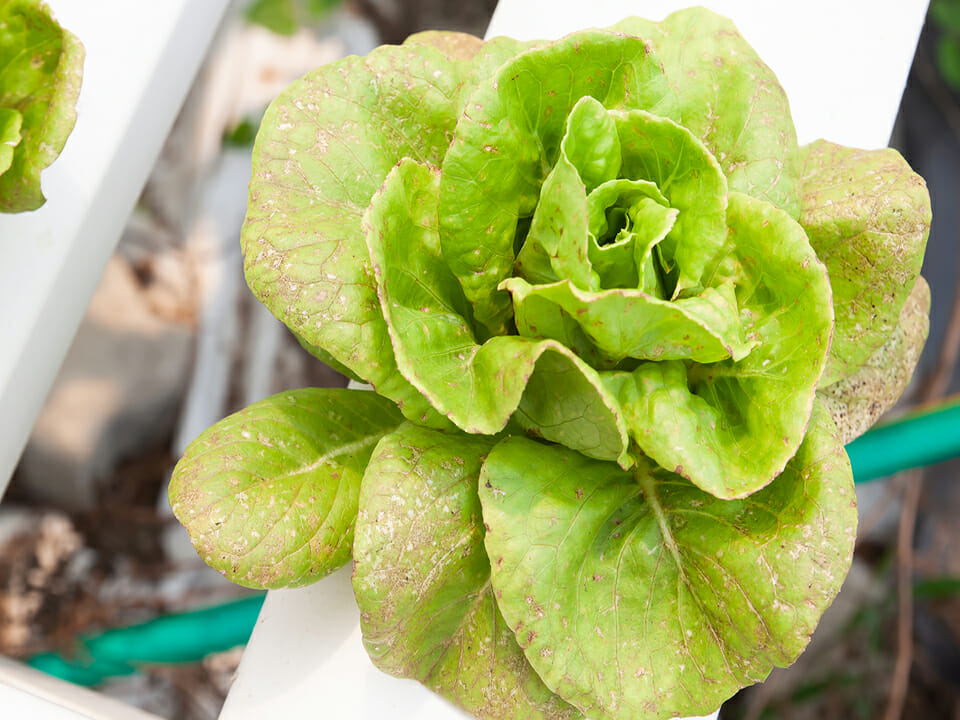
Symptoms
Phytophthora rot symptoms start with the roots, then spread to the rest of the plant. Sick roots turn black or dark brown, become soft and mushy, give off an unpleasant smell, and are covered in a slimy substance. The disease then reaches the stem, before spreading out from the middle of the leaf to the outer section in patches that gradually turn yellow, then brown, and black.
3. Fusarium
Fusarium is a fungal pathogen usually found in the soil. But, like any respectable pathogen, it also produces motile zoospores which allow it to spread through water. Although it’s not as common in hydroponic systems as Pythium or Phytophthora, this disease can easily decimate your crops.
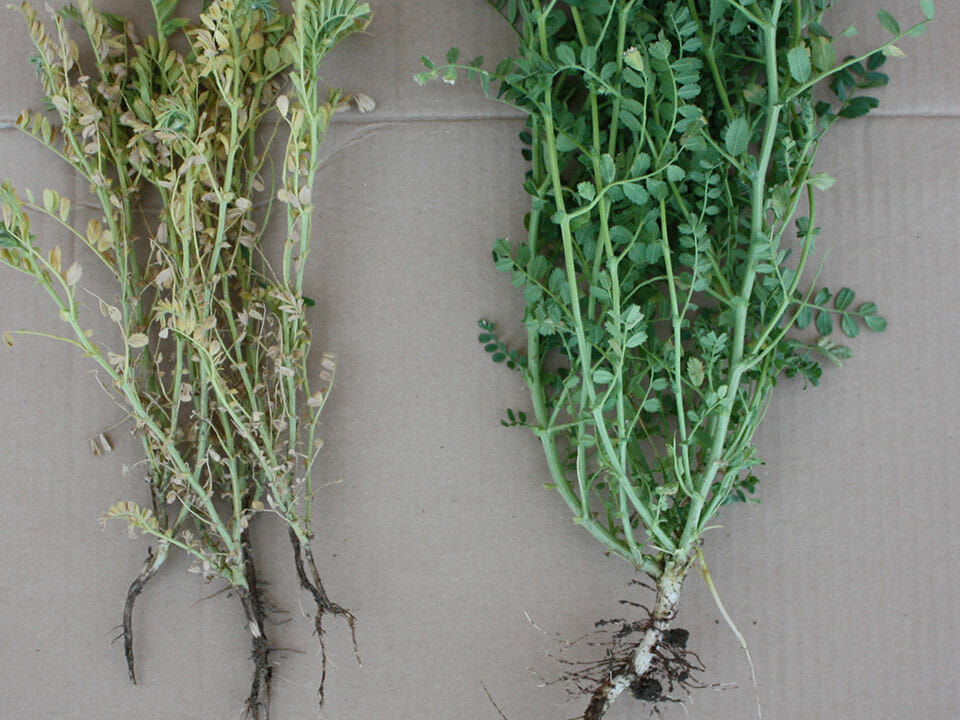
Symptoms
The symptoms of Fusarium can take weeks to appear, so you may notice them later in the plant growth stage. They include stunted growth, leaves turning yellow, reddish-brown discoloration at the base of the stem, and black, mushy roots. Leaf discoloration usually starts with the bottom leaves, then moves up to the newer ones.
4. Algae
You’re probably thinking: ‘Hold on, algae are not a disease’. However, think of algae as weeds taking over your hydroponic system. Not only can they become a major problem for your plants, but they create growing conditions that exacerbate the presence of other pathogens.
Algae harm your plants in the same way weeds do: by depriving them of nutrients. In addition, they decrease the oxygen levels in your hydroponic system. Lower oxygen levels are not just bad for the plants, but they also encourage the spread of fungal diseases such as Pythium.
Algae can easily become invasive and tricky to get rid of. They cling to the surfaces and, because they have a slimy texture, they’re difficult to scrape off. A buildup of algae can also impact the effectiveness of your hydroponic system, such as by blocking water filters or depleting nutrients.

Symptoms
Algae can easily take hold of a hydroponic system for the same reasons that your plants thrive in it: access to light, water, and nutrients. You can prevent the presence of algae by following some basic guidelines, but it’s important to be able to spot even the tiniest invasion of algae so you can deal with it as quickly as possible.
Luckily it’s fairly easy to detect algae. Regularly inspect the surface of your hydroponic equipment and under the trays for the presence of algal growth. Although most algae is green and wispy, it can also be yellow, red, brown, or black.
In severe cases, you may also notice an unpleasant, moldy or swampy smell. That’s the smell of algae decomposing.
10 methods to prevent hydroponic waterborne diseases
Pathogens such as fungi, bacteria, and algae can spread faster through water than in soil. They’re also remarkably resilient and have billions of years of survival expertise at their disposal. For them, a hydroponic system is like a little piece of heaven that provides the moisture, nutrients, and the right temperatures needed to thrive.
1. Test your water
Preventing plant diseases is challenging enough in a soil-based garden. But a hydroponic system is far more delicate, which means you have to be extra vigilant about potential contamination.
To keep your hydroponic system free of pathogens, it’s important to implement multiple preventative measures, from testing your water to sanitizing your equipment:
The first step to minimize the risk of waterborne diseases is to test your water for the presence of pathogens. A water test will also provide information about the pH and levels of nutrients such as nitrogen, magnesium, copper, iron, and more.
You can get a water report from your local water and sewer commission. However, these reports may not always be comprehensive enough for your hydroponic needs. The only way to really know what’s in your water is to get a specialized test kit that can also identify pathogens such as Pythium or Phytophthora.
If you’re using reverse osmosis (RO) for your hydroponic system, bear in mind that the water can still contain pathogens. RO removes salts, minerals, metals, and contaminants from the water, but it doesn’t remove all microscopic organisms from the water.
Bacteria can also grow inside your reservoir tank, so you should run regular tests to make sure that your water is pathogen-free.
2. Use water filters
Always filter the water you use in your hydroponic system, especially if you’re using surface water instead of well water. Filters are a reliable way to remove pathogens from irrigation water and can even reduce the risk of algae outbreaks. They’re also a great way to improve hard water, which can otherwise interfere with nutrient absorption and lead to calcium carbonate deposits in your system.
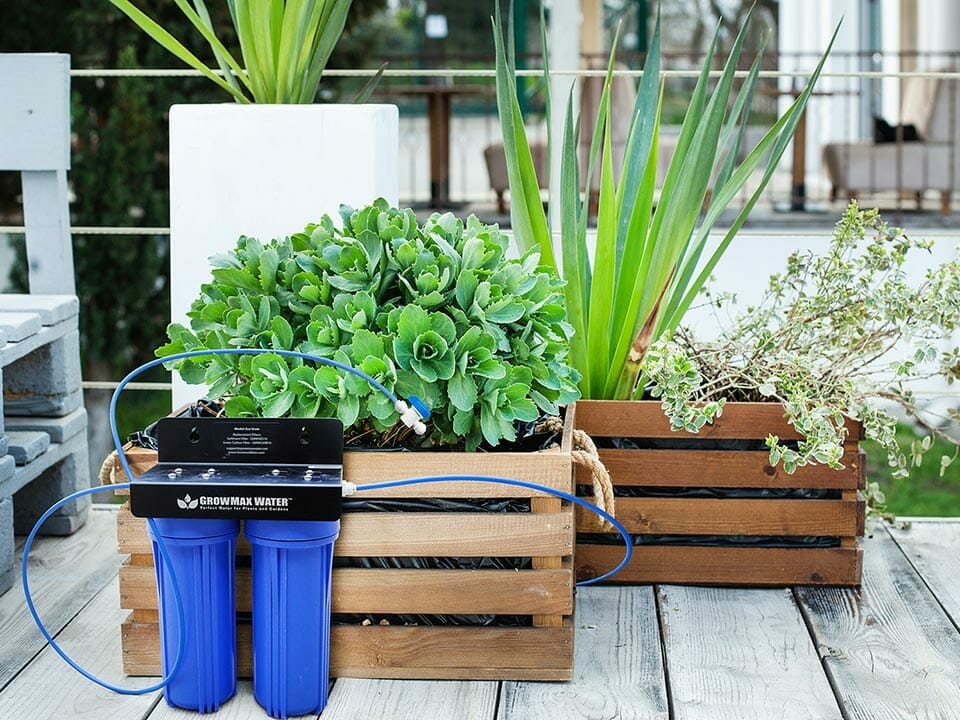
Some simple and inexpensive examples include mesh filters, activated carbon filter cartridges, membrane or polypropylene filters. For something on the higher end of the budget, you can use ion exchange filters or reverse osmosis.
3. Use UV light
Ultraviolet (UV) light can be used to treat and sterilize water. It’s highly efficient in destroying pathogenic fungi, including Pythium, and it also kills algae.
However, using UV light for hydroponics comes with some drawbacks. As effective as it is in getting rid of pathogens, it also destroys beneficial microbes, which can cause further imbalances and problems down the line.
UV sterilizers can be expensive, but if you consider the alternative sterilization and sanitation methods, they’re a worthwhile investment.
4. Clean and sanitize regularly
Proper sanitation is crucial in a hydroponic system. The best practice is to make a list of cleaning and maintenance tasks and go through them regularly.
At the top of your list should be deep cleaning the entire system at the start and end of each crop cycle. Disinfect your containers, rafts, tools, filters, hoses, the water reservoir, and thoroughly scrub all surfaces, including the floor and walls.
There are several sanitation methods you can use. One of them is using a solution of 1 part hydrogen peroxide and 10 parts water. Chlorine, bromine, and iodine can also be used, but stick to the recommended dosages to avoid phytotoxicity.
Steam is efficient in disinfecting surfaces and equipment, especially porous materials like wood or polystyrene. You can also use it to sterilize your growing media, such as coir, perlite, or LECA.
If you’re using polystyrene boards, check them before you use them for planting. Polystyrene is difficult to clean properly, and can become a hotbed of pathogens if not cleaned properly. Often, it’s better to throw out the old boards, and use plastic instead.
Lastly, don’t forget about cross-contamination!
If you’re growing vegetables in a hydroponic system as well as an outdoor garden, try keeping a separate set of tools for each. The same applies to gardening equipment such as propagation trays, gardening gloves, even shoes and coats. Also, remember to wash your hands after handling outdoor plants to minimize the spread of soil-borne pests and diseases.

5. Find the right balance when using fertilizers
Unlike soil, water has a low nutrient score, which means that you’ll need to constantly provide your plants with a fertilizer solution. Plants need 17 micro and macronutrients to grow, and any absence or imbalance will have an immediate impact on their health and development.
Using too little fertilizer will lead to nutrient deficiency, which stunts plant growth, and also makes plants more susceptible to diseases. But too much of anything can be a bad thing, especially when it comes to fertilizers.
Let’s take nitrogen and phosphorus, for example. Both are essential in keeping your plants healthy and productive. Nitrogen helps with photosynthesis and promotes vegetative growth, while phosphorus helps with root development, flowering, and overall plant health. However, too much nitrogen and phosphorus also encourage a buildup of algae and cyanobacteria.
6. Maintain a correct water pH
The pH of your water plays a crucial role in nutrient absorption, which means that fertilizers and water pH are intrinsically related. Most vegetables prefer growing in slightly acidic soil. In hydroponics, this translates to a water pH range between 5.0 and 6.5. The best way to test it is by using a pH meter.
If the water is too acidic or too alkaline, it will interfere with the plant’s nutrient uptake. For instance, a low pH (acidic) disrupts magnesium absorption, which leads to symptoms of magnesium deficiency, such as yellowing between the leaf veins. Meanwhile, a high pH (alkaline) interferes with the absorption of iron, manganese, and phosphates.
Keeping the pH within the right range can also reduce the risk of waterborne pathogens. A lower pH will create inhospitable living conditions for fungal diseases such as Pythium and Fusarium.
7. Control pests
One of the main appeals of hydroponic systems is that they greatly reduce the risk of pests. However, these systems are not 100% pest-free. And when it comes to pests, the threat to your plants is twofold: pest damage and viral or fungal disease.
For example, thrips cause leaf yellowing and stunted growth. But they also transmit several plant viruses that reduce crop yields and lead to plant death.
Fungus gnat adults are mostly harmless, but the larvae can transmit fungal diseases, including the dreaded Pythium.
Aphids, scales, and mealybugs secrete a sweet substance called honeydew, which attracts sooty mold. On its own, sooty mold rarely does severe damage to your plants. But when combined with a pest infestation, it can weaken and eventually kill them.
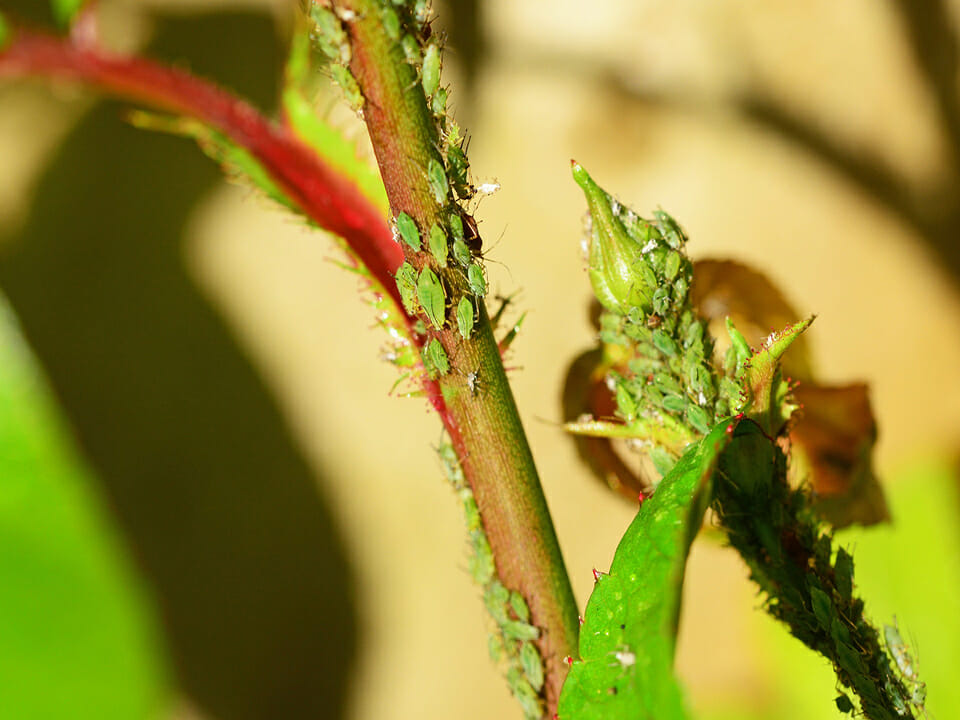
Cleaning and sanitizing your equipment is a must in preventing the spread of pests. Growing plants in an enclosed environment such as a greenhouse also helps, but only if there are no gaps or holes for the pests to crawl through. If you’re using a growing media, always remember to sterilize before you plant anything.
8. Provide oxygen
Plants use their roots to absorb oxygen. This is easily done when they’re growing in the soil or in an aeroponics system. But in a hydroponic system, you’ll need to add dissolved oxygen into the water.
Low oxygen levels can impact your hydroponic crops in several ways. For starters, the plants will have underdeveloped roots, which will limit their water and nutrient absorption. Poor aeration also creates an environment that facilitates a buildup of pathogens, from algae to bacteria and fungi.
9. Monitor the temperature
As temperatures rise, the risk of pests and diseases also increases. The problem is that your plants and pathogens have similar temperature requirements.
For instance, the optimal temperature for Pythium is 77°F – 86°F. Algae grow best in temperatures between 68°F – 86°F. Phytophthora, on the other hand, is not too fussy and can occur in temperatures ranging from 59°F – 77°F.
Monitor your plants for any signs of distress when you notice temperatures approaching 77°F, and remember to check their roots regularly for signs of disease.
10. Consider using biofungicides
Biofungicides are a biological method that uses beneficial microbes to control pathogens such as fungi and bacteria. These beneficial microbes occur naturally in the soil, which means that they’re safe to use in organic production. Plus, pathogens are less likely to develop resistance to them, compared to synthetic fungicides.
The best way to use biofungicides is to apply them as a preventive treatment. Add them to your growing media before planting, or use them in your nutrient solution.
It’s important to keep in mind that biofungicides are living things. They have a short ‘shelf life’ and need to be used and stored according to the instructions on the label. But when applied regularly, they can make a significant positive impact on the health of your hydroponic plants.
Can you get rid of a waterborne disease in your hydroponic system?
There’s a reason that we’ve spent much of this article talking about the prevention of waterborne disease in hydroponics, or really any water-based growing system. That’s because it’s hard to recover once the disease takes hold of your plants.
Luckily, if you spot symptoms of disease early you still have a chance to save your plants. If your leaves are yellowing or wilting, or if the roots are no longer pearly white, it’s important to take steps to clear your system of pathogens!
Start by changing out all of the water with fresh, aerated water and cleaning as much of your system as possible with a diluted hydrogen peroxide solution.
Physically rinse the roots under water and remove anything gunky or slimy. Trim any rotted roots with sterilized pruning scissors. Once your plants are back in the right conditions, they should be able to recover and grow new roots, though they might experience some stunted growth.
Unfortunately, roots that are rotting won’t magically heal. If most or all of the roots are brown or smelly, that plant is a goner and should be discarded.
Remember, the best way to manage disease in a hydroponic system is to prevent it in the first place!

